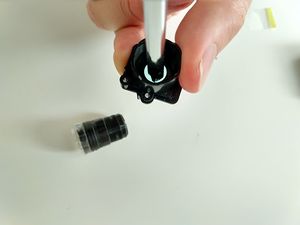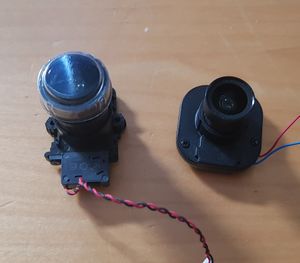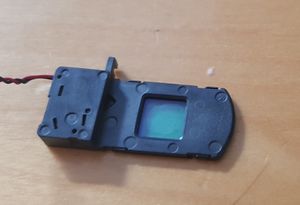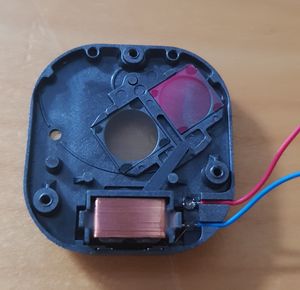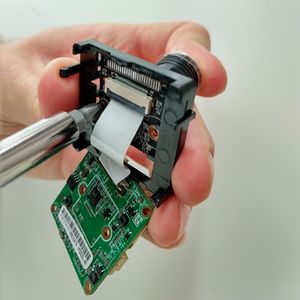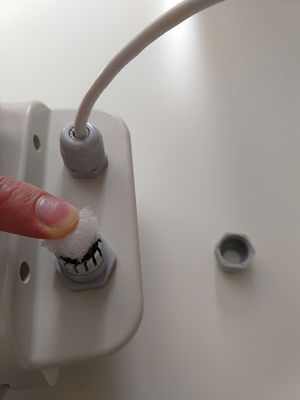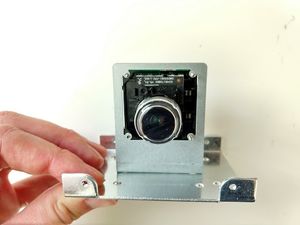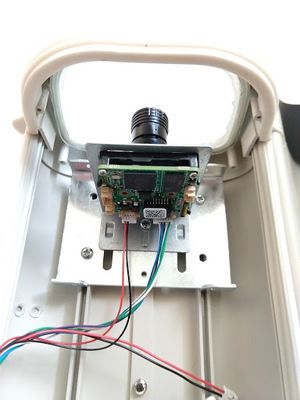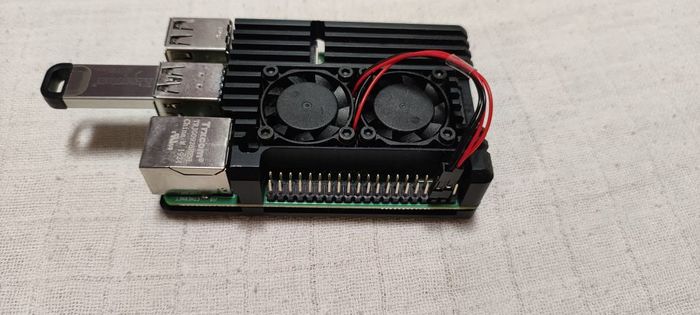Build the camera itself: Difference between revisions
mNo edit summary |
mNo edit summary |
||
| Line 39: | Line 39: | ||
i. Screw the lens back into the lens holder. | i. Screw the lens back into the lens holder. | ||
</td></tr></table> | </td></tr></table> | ||
<table><tr><td> | <table><tr><td> | ||
== 2. Attach the lens to the camera == | == 2. Attach the lens to the camera == | ||
[[File:lensattaching.jpg|thumb|right|Attaching the Lens]] | [[File:lensattaching.jpg|thumb|right|Attaching the Lens]] | ||
| Line 50: | Line 50: | ||
c. Replace the circuit board in the plastic holder. | c. Replace the circuit board in the plastic holder. | ||
</td></tr></table> | </td></tr></table> | ||
<table><tr><td> | <table><tr><td> | ||
== 3. Prepare the camera housing == | |||
== | |||
[[File:glands.jpg|thumb|right|Glands in Place]] | [[File:glands.jpg|thumb|right|Glands in Place]] | ||
a. Fit the small cable gland to the housing. | |||
b. Pass the loose ends of the camera PoE cable up through the housing, but do not tighten the cable. | |||
c. Slip the cap over the cable, then tighten the cable. | |||
b. Fit the large cable gland in the other opening, and push a piece of plastic packing foam into it. | |||
: '''TIP:''' Do not completely seal the opening. The idea is to prevent insects from getting in, but allow moisture out. | |||
: '''NOTE:''' We do not recommend that you put the entire cable inside the housing. The LEDs on it will create light pollution inside the housing. | |||
</td></tr></table> | </td></tr></table> | ||
<table><tr><td> | <table><tr><td> | ||
== | == 4. Attach the camera == | ||
[[File:camerafitted.jpg|thumb|right|Camera In Mount]] | [[File:camerafitted.jpg|thumb|right|Camera In Mount]] | ||
Revision as of 23:07, 27 August 2025
Most people think this section is the most fun. Here, you put all the pieces together. If you find something that is not particularly clear, let us know in the forums.
1. Prepare the lensThere are two types of lens holders - a holder with a single filter and a holder with an electronic filter drawer. a. Remove the protective covers from the sensor and the lens.
The cameras come with an IR Block filter in the lens holder, but we do not use this filter. b. If you have a lens with a single filter like the one shown in the first image, unscrew the lens from the holder. c. With a screwdriver, carefully push the filter out of the lens holder, as shown in the image on the right.
d. If your holder is the type with a rectangular sliding drawer, remove the screw on the end and remove the drawer. Then remove the while filter glass entirely. e. If your holder has a single drawer, remove the three small screws on the top and take off the cover. f. Remove the clear filter.
g. Reassemble the filter holder, but do not connect the power cable to the camera. h. Turn the lens holder over to see two plastic nubbins on the underside of the lens holder.
i. Screw the lens back into the lens holder. |
2. Attach the lens to the cameraa. If you have an IMX291, carefully unclip the circuit board from the plastic holder, but do not detach the ribbon cable. (IMX307 is a single board) b. Use the supplied screws to attach the lens to the sensor.
c. Replace the circuit board in the plastic holder. |
3. Prepare the camera housinga. Fit the small cable gland to the housing. b. Pass the loose ends of the camera PoE cable up through the housing, but do not tighten the cable. c. Slip the cap over the cable, then tighten the cable. b. Fit the large cable gland in the other opening, and push a piece of plastic packing foam into it.
|
4. Attach the cameraNote: I recommend installing the camera in the housing at this point so that you do not have to detach the cables or risk knocking focus later on. However, you can proceed to test focus etc before installing the camera in the housing if you wish. If you prefer to do that, skip this section for now and come back later. Otherwise:
See image for the proper camera board orientation, so the video is not sideways or upside down. |
Installing the Camera in the Housing
|
Perfect! Now you have the camera part ready. Let’s continue with flashing the RMS Linux image onto an SD card or a USB key. Back to the signpost page.
